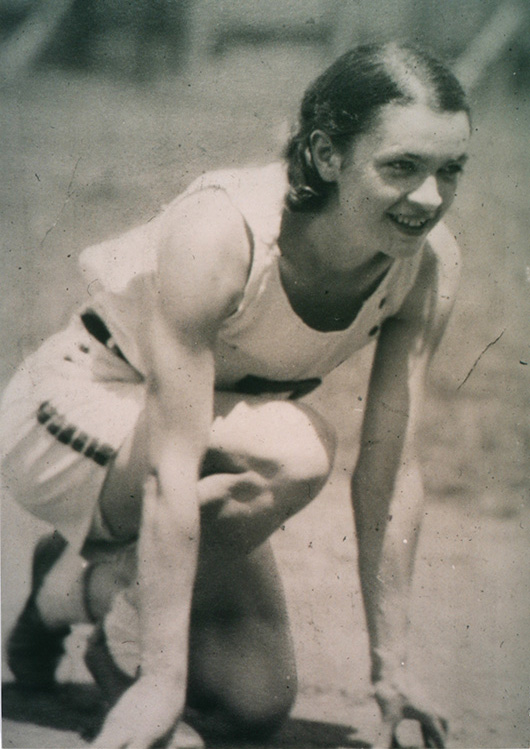Flying Schoolmarm
Aileen Aletha Meagher exemplifies versatility. She ventured down various paths in her life and stood out in each one.
Aileen first came to prominence at track and field. At the time, especially at the Halifax convent school she attended, "ladies" were not supposed to run. In the wider world, Baron de Coubertin, the founder of the modern Olympic movement, had said it was "impractical, uninteresting, unaesthetic, and incorrect" for women to do men's sports. Well, Aileen begged to differ. She cut off a pair of her brother’s trousers to make pants she could run in. “I just went out and ran around the track as fast as I could go.” She was a true natural. “The nuns were ashamed of me and my parents not too sure,” Aileen later recalled.
In her first year at Dalhousie University, Aileen entered a track meet for new students and won every race. The track coach suggested she train seriously, which she did. Soon Aileen was one of the fastest runners in Canada. Because she was a school teacher, the local press dubbed her "Nova Scotia's Flying Schoolmarm." By 1930, Aileen held the Canadian record for the 100 and 220-yard events. In 1935, she was named the Most Outstanding Canadian Female Athlete. In 1936, she represented Canada at the Berlin Olympics, where she earned a bronze medal in the 400-yard relay. Two years later, at the British Empire Games, Aileen won a silver and a bronze.
When Aileen ended her running she became a much admired, fulltime school teacher. In 1949, approaching her 40th birthday, Aileen began to take classes at the Nova Scotia College of Art and Design. It was not long before art became a vital part of her life; she would go on to win awards. She was also an intrepid traveller and a talented writer. Aileen Meagher is in both Nova Scotia Sport Hall of Fame and the Canadian Olympic Hall of Fame.
